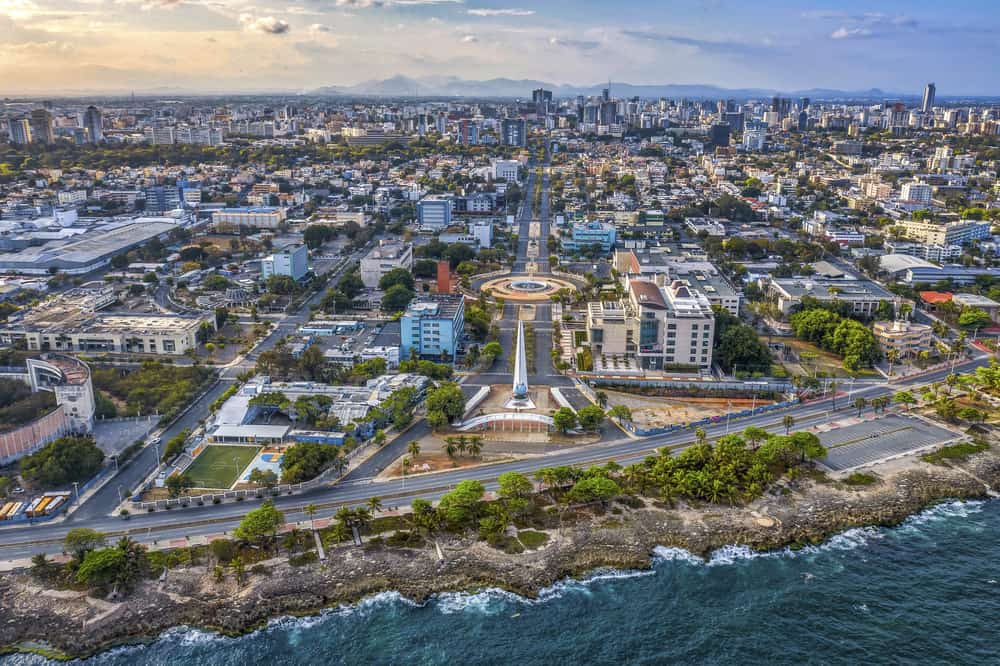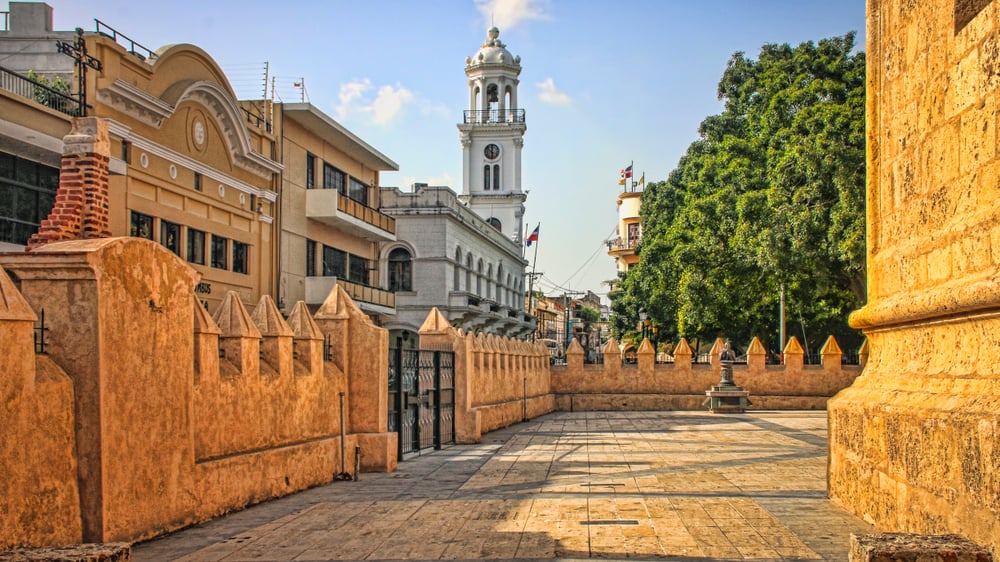
The Dominican Republic is a Caribbean country that’s famous for its sunny beaches and golf courses, adventure sports, and a fascinating culture and history. Since it’s only a few hours away from the US, it’s also a convenient (and very affordable) travel destination.
Every trip to the Dominican Republic should include a visit to its capital, Santo Domingo. Aside from being its largest and most developed city, it has the tenth largest population in Latin America.
Santo Domingo is also the oldest European settlement in the Western Hemisphere, and the oldest official seat of the Roman Catholic Church in the Americas. The city center, Ciudad Colonial, was even declared a UNESCO heritage site.
Thus, Santo Domingo is an interesting blend of old and new. It has palaces and fortresses that have stood for centuries, as well as skyscrapers, shopping districts, and a colorful nightlife.
In this article, find out more about the many facets of Santo Domingo—the capital of the Dominican Republic, and one of the most fascinating cities in the Caribbean.
Where is the Capital of the Dominican Republic Located?

The Dominican Republic is found on Hispaniola Island, which is part of the Greater Antilles Archipelago. Haiti lies in the west. Puerto Rico lies just 133 kilometers to the east. Meanwhile, the Bahamas is in the north, and Venezuela is in the south.
Santo Domingo is on the southeast coast of the Hispaniola. It is located right at the mouth of the Ozama River, a strategic location for trade. In fact, it has one of the largest and busiest ports in the country.
What is the history of Santo Domingo?

In 1496, Bartholomew Columbus, the brother of Christopher Columbus, established the city on the east bank of the Ozama River. It was the first Spanish colony in the New World, and the de facto capital of the province.
He first called it Nueva Isabella as a tribute to Queen Isabella of Spain, but later changed the name to Santo Domingo in order to honor Saint Dominic. Unfortunately, a strong hurricane demolished most of the city structures in 1502, and the city was rebuilt on its current location.
The Spaniards used Santo Domingo as their main headquarters as they explored the West Indies. Many expeditions that eventually led to the conquest of Cuba, Puerto Rico, and Mexico were initiated in this city. It even earned the reputation of being the “Gateway to the Caribbean.”
When did Santo Domingo become the Capital of the Dominican Republic?

Since it was established, Santo. Domingo was always the seat of the Spaniards’ political, military, and economic power. All the government offices, and important religious and economic offices, were located in the city.
Thus, anyone who wanted to wrestle control from the Spaniards would try to get control of the city. It was attacked by local rebels, privateers like Sir Francis Drake in 1586, British forces led by Oliver Cromwell in 1655, Haitian rebels in 1801, and French forces in 1802.
Even when power changed hands, Santo Domingo was always the recognized capital. So not surprisingly, when nationalists won full independence in 1844, they declared the city as the official capital of the Dominican Republic.
Why did Santo Domingo become the Capital of the Dominican Republic?
Santo Domingo’s location made it the ideal location for a colony. Since it was near the ocean, it was easy to communicate with Spain and the other territories, and launch expeditions to the rest of the region.
The rivers, fertile soil, and hills also provided a steady source of food and water. Population boomed, and the city grew faster than any of the other settlements. The Spaniards also poured many of its resources into developing the city, erecting buildings and other monuments that would showcase the power and glory of Spain.
Because of this, Santo Domingo was always the center of power, culture, trade, and later on, industrial and economic development—and the most natural choice as the capital of the Dominican Republic.
What are the Best Places to visit in Santo Domingo?
Santo Domingo is an enchanting interplay of Old World charm, dynamic urban life, and European and Caribbean culture. These sites are some of the best ways to experience all the city has to offer.
La Zona Colonial
This walled area marks the boundaries of the original settlement that Columbus established in the early 1500s. It is home to some of the city’s most important historic sites, such as the Catedral Primada de America (one of the oldest churches in the country) and the Alcázar de Colón palace.
The area is also full of excellent hotels and restaurants and shops, so busy tourists can also grab a meal and do shopping while exploring. Everything is connected by cobblestone streets, including the Calle de Las Damas—the oldest street in the Dominican Republic.
Alcázar de Colón
This is a sixteenth century palace that was converted into a museum. The structure itself is very well preserved, and reflects Gothic, Renaissance and Moorish architectural influences.
The diverse art collection also has fantastic pieces from the Medieval and Renaissance periods. The self-guided audio tours provide a rich background on all of the works, and also gives interesting trivia on life in the Spanish court.
Fortaleza Ozama
This is the oldest Spanish fort that still remains standing—and provides an excellent view of the ocean, too!
The tour guides also provide interesting historical facts, including the great battles, and important military and political events as the country shifted hands from Spain, England, Haiti, France, and the US.
Los Tres Ojos
The national park is a must for nature lovers. The name means three eyes, representing the different cave pools: La Nevera, Aguas Azufradas, and Lago de Las Mujeres.
Swimming in the pools is not allowed, but visitors can explore the caves either by boat or by foot. The caves are also closely linked to the sacred history of indigenous tribes, and tour guides often share some of the lore and culture.
Discover Santo Domingo’s cultural and historical treasures
Centuries ago, Santo Domingo was hailed as the “gateway to the Caribbean.” While it may no longer play a very large political role, it helps visitors step into the interesting culture and history of the Dominican Republic.
